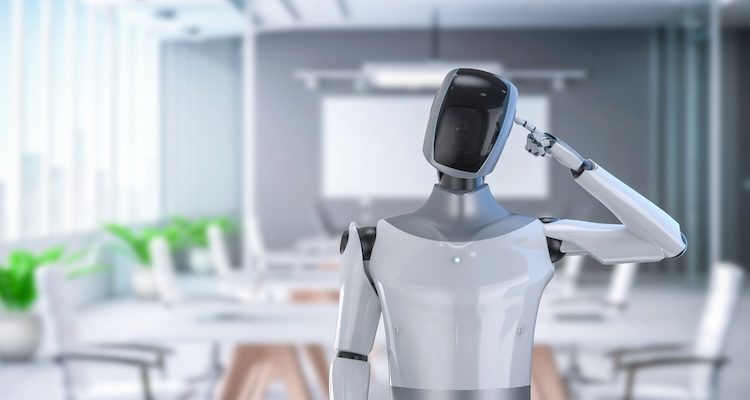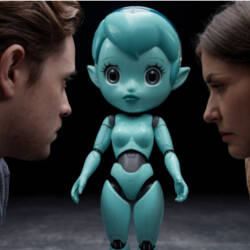The Artificial Companions of Your Wet Dreams—or Broken Promises?
Now more than ever, it’s important to separate hype from reality

Erotic, romantic, emotionally supportive, or merely amusingly flirty chatbots may have made some truly mind-bogglingly impressive leaps and bounds over the last couple of years, but the physical side of the artificial companion equation is clearly dragging behind—or is that about to change?
Quite a few excited, maybe over-excited, journalists seem to think so, repeatedly heralding a bright future of fully functional, completely autonomous, AI-equipped next-generation robots.
In a time when technological hyperbole seems to be the rule of the land, we can’t help but wonder, are these enthusiastic reports factual or fantastical?
Artificial companions or tomorrow—today?
A recent Jumpstart Magazine article is a good example of science fiction as opposed to actual science reporting, beginning with the rousing subtitle, “The age of robot sidekicks is here. They are smarter, friendlier, and ready to help you.”
Skipping to the second of the five artificial companions that’s supposed to change the world for the better, unveiled at this year’s Consumer Electronics Show (CES), TCL Electronics’s Ai Me is a portable, customizable, and flat-out adorable little companion bot.
RECOMMENDED READ: Futurologist’s 2015 Sexbot Prediction: Laughably off Base or Surprisingly Accurate?
Equipped with expressive camera eyes and what some might feel is a disturbingly childlike voice, Ai Me’s sensors allow it to perceive its immediate environment and, through its onboard AI, describe it as well—making it not just a friendly little companion and entertainment system but also a security system.
So far, so good, but though Ai Me’s unquestionably adorable, it seems nothing more than a child’s electronic toy than a bona fide robotic artificial companion with gimmicks and gadgets we’ve already seen a million times over.
Pet me, love me?
The same is true for Elephant Robotics’ metaAnimals, a line of robotic kittens and puppies also shown at CES. As with Ai Me, they don’t appear to be mechanically advanced, with a decidedly limited range of motion or expressiveness.
According to Elephant Robotics, what sets them apart is their onboard Large Learning Model software, which enables them to learn from and adapt to their owner’s needs and interests.
Begging the question, why not get a flesh and blood pet? Sure, metaAnimals could be a great option for allergy sufferers, but as far as emotionally fulfilling companions go, they simply can’t compare to the real thing.
No sex, please, we’re a robot
Ironically, Realbotix’s CES announcement of moving away from developing and selling sex-compatible companions—thankfully leaving fully functional artificial companions in the hands of their Abyss Creations, RealDoll division—which we covered not long ago—is next on Jumpstart’s list.
Why ironically? As we discussed, Realbotix’s decision is a step backward for artificial companions, robbing their owners of the ability to connect on a deep, and sexually satisfying, level.
Hype is all you need
Let’s pass over LG’s Self-Driving AI Home Hub as Jumpstart might consider it an up-and-coming artificial companion. It’s little more than another AI-equipped toy, whose not-at-all anthropomorphic shape would make it extremely difficult, if not flat-out-impossible, to form any sort of emotional or—unless it’s a specific kink—sexual connection.
Bringing us back around to the first, and as I’ll soon explain, also the last so-called promising artificial companion: Tesla’s Optimus.
As anyone already familiar with Musk’s string of broken promises—from autonomous taxis to his Boring Company, not to mention the dozens of others too many to name—knows he’s about as far away from reputable as you can get.
Disconnect described Musk’s penchant for self-serving or, more accurately, self-deceiving exaggeration well, “Elon Musk got used to getting by with bold statements and flashy visuals that might never go anywhere,” adding, “His fall can’t come soon enough, but will open more space for a future that looks nothing like the one he has in mind.”
Even if Optimus would, by some miracle, become a reality, its cold, brutally unfriendly design would appeal to anyone in search of an aesthetically attractive, sexually interesting artificial companion.
Don’t rush the future
Articles like Jumpstart’s may not seem egregiously inaccurate—simply a rehash of a couple of CES-related press releases with a click-baitish bow on top, but, similar to Musk’s deceptiveness, they might end up doing more harm than good, misinforming people about what a genuine artificial companion could and should be.
Ideally, that’s not just a hodge-podge of AI and clumsy mechanics but something capable of meeting a person’s emotional, physical, and, yes, sexual needs—and most of all, an achievable, realistic promise rather than cheap, shallow, manipulative fantasy.
Image Sources: Depositphotos

















